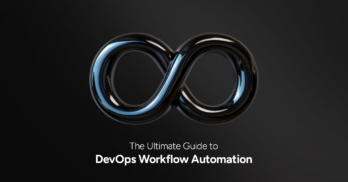Greetings! I'm Aneesh Sreedharan, CEO of 2Hats Logic Solutions. At 2Hats Logic Solutions, we are dedicated to providing technical expertise and resolving your concerns in the world of technology. Our blog page serves as a resource where we share insights and experiences, offering valuable perspectives on your queries.
n a DevOps environment, managing infrastructure manually can be time-consuming and prone to errors. Infrastructure as Code (IaC) is transforming teams to handle infrastructure, allowing for automation, scalability, and consistency in operations. This blog will help you understand how IaC fits into the DevOps ecosystem and why it’s a game changer for modern development practices.
What is Infrastructure as Code (IaC)?
Infrastructure as Code (IaC) is a practice that involves managing and provisioning computing infrastructure through machine-readable configuration files, rather than physical hardware setups or manual processes. By treating infrastructure the same way developers treat code, IaC makes deploying, managing, and scaling resources easier, ensuring consistency and reducing the risk of human error.
How Does IaC Work?
Capturing Configurations: IaC uses code that can be controlled in version control, like application code to document infrastructure configurations.
Defining Desired State: The configuration comes prebuilt and defines how the infrastructure is to be set up, including information about:
- Servers
- Databases
- Other computing resources
Execution of IaC Tools: When using an IaC tool, the code is run to change the infrastructure to the desired state.
Deployment and Provisioning: This process can involve:
- Deploying new servers
- Configuring networking
- Provisioning databases
Utilizing Version Control: Teams employ version control systems to:
- Track changes
- Collaborate effectively
- Restore settings when necessary.p0
Enhancing Teamwork: Using IaC means organizations can minimize the role of humans while increasing inter-team collaboration and efficiency.
What is the Role of IaC in DevOps?
1. Automating Infrastructure Management
IaC plays a key role in automating the provisioning, configuration, and management of infrastructure, reducing manual intervention, and ensuring that infrastructure is deployed consistently.
2. Ensuring Consistency Across Environments
IaC ensures that development, testing, and production environments remain uniform, minimizing discrepancies and reducing the chances of environment-specific issues.
3. Enabling Continuous Integration/Continuous Delivery (CI/CD)
IaC integrates with CI/CD pipelines, allowing infrastructure changes to be tested, deployed, and rolled back automatically, facilitating faster, more reliable releases.
4. Supporting Version Control and Collaboration
IaC allows infrastructure to be version-controlled, enabling teams to track changes, collaborate effectively, and roll back to previous configurations if needed, ensuring accountability and stability.
5. Facilitating Scalability
IaC makes it easier to scale infrastructure as needed by adjusting resources through code, allowing businesses to respond to changing demands quickly without manual intervention.
6. Promoting Immutable Infrastructure
IaC supports immutable infrastructure, where systems are not changed after deployment. Instead, new environments are created and replaced, improving predictability and reducing errors.
7. Enhancing Security and Compliance
By coding security policies and compliance checks into the infrastructure, IaC ensures consistent enforcement of security standards across all environments, reducing risks.
What are the Benefits of IaC?
Implementing Infrastructure as Code can deliver numerous benefits to organizations, including:
- Faster Deployment
Automation of infrastructure through IaC reduces the time it takes to provision and configure environments, allowing teams to deploy updates and new features more quickly.
- Reduced Errors
With automated processes, IaC eliminates manual configuration that often leads to human errors, ensuring more reliable infrastructure setups.
- Cost Efficiency
IaC optimizes resource use by automating scaling and reducing the need for manual management, leading to lower operational costs.
- Improved Collaboration
IaC uses a shared language (code) for infrastructure management, which improves collaboration between development and operations teams, reducing misunderstandings and improving teamwork.
- Enhanced Scalability
IaC allows infrastructure to scale easily and dynamically based on changing business needs, providing flexibility and improving performance optimization.
- Increased Agility
IaC helps teams adapt quickly to new requirements, making the development and deployment processes more agile and responsive to change.
- Improved Security and Compliance
IaC ensures that security policies and compliance requirements are consistently enforced across environments, reducing vulnerabilities and regulatory risks.
- Disaster Recovery
IaC simplifies disaster recovery by making it easier to replicate and restore infrastructure quickly, reducing downtime in the event of failures.
CONTACT US FOR A DEVOPS ASSESSMENT
IaC in Cloud Computing
Cloud computing has transformed the way businesses are conducted and scaled upward. For example, Google Cloud, AWS, and Azure have made it increasingly easy to manage resources on the cloud, and IaC supports much more variable pricing models and instantaneous scaling according to demand.
For example, through IaC tools, an entire infrastructure could be developed into cloud environments in minutes, and its resources will always be provided precisely as needed, minus the physical confinements of traditional infrastructure. This is priceless for modern enterprises that are eager to adapt to changes brought about by market conditions and stay competitive.
Implementing IaC in a DevOps Pipeline
Implementing an IaC strategy within a DevOps pipeline involves several key steps:
- Standardize Infrastructure Configurations: Define server specifications and networking configurations consistently.
- Store IaC Scripts in Version Control: Another is to use systems such as Git when sharing infrastructure code.
- Implement Automated Testing: Validate the infrastructure code to catch errors before deployment.
- Incorporate IaC into CI/CD Pipelines: Works with Continuous Integration and Continuous Delivery to automate the deployment processes.
- Set Up Automated Deployments: Incorporate structures that ensure infrastructure code updates are deployed automatically.
- Feedback Loops and Monitoring: Use monitoring tools to provide insights into infrastructure performance and quickly spot issues.
- Periodic Reviews: Regularly review IaC scripts and infrastructure configurations to ensure efficiency and effectiveness.
Tools for Infrastructure as Code (IaC)
There are several IaC tools available, each offering different capabilities to meet various infrastructure requirements. Some of the most popular IaC tools include:
- Terraform: A free software where users can declare infrastructure for the data center and have it provisioned for them.
- Ansible: Uses a simple, agentless approach to automate infrastructure, configurations, and deployments.
- Puppet: Facilitates the automation of provisioning and managing infrastructure through code.
- Chef: Offers a framework for writing scripts to automate infrastructure provisioning.
Using the right IaC tools can streamline workflows and enhance team collaboration, allowing organizations to manage their infrastructures more effectively and reliably.
Conclusion
Speed and agility can make or break success, manually managing infrastructure is no longer just inefficient—it’s a competitive disadvantage.
Whether you’re a startup looking to scale rapidly or an enterprise aiming to stay competitive, the question isn’t if you should implement IaC, but when. The tools are mature, the benefits are clear, and the expertise is available. Don’t let infrastructure be the bottleneck that holds your organization back, contact our DevOps services to improve your store performance.

Related Articles







